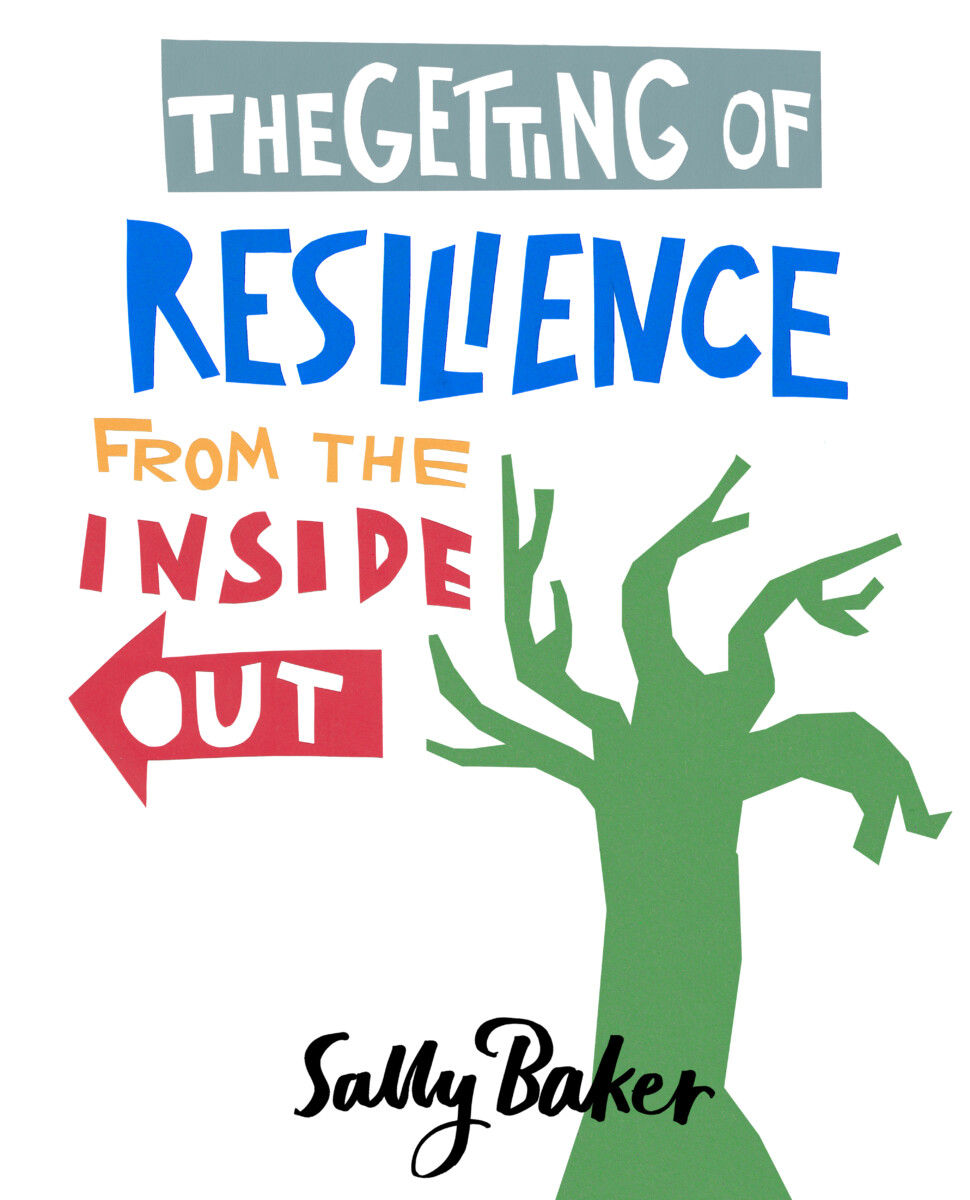By Sally Baker, award-winning therapist and author of The Getting of Resilience From The Inside Out
When life gives you lemons, toxic positivity says make lemonade and smile – or else. This insidious cultural habit of minimising negative emotions can cost us our ability to overcome life’s challenges; in fact, it stunts our resilience. Here’s how:

Toxic positivity suppresses emotion processing
It tells us we must ‘look on the bright side’ and remain upbeat no matter what. This mindset suppresses our natural negative emotions that need processing to find meaning, heal, and grow from difficult experiences. Pretending everything is fine, problems fester unchecked beneath the façade. Financial struggles, ailing health, and relationship conflicts – all get minimised under a blanket of false cheer. Valid concerns and negative emotions get dismissed as unnecessary ‘negativity’ to avoid.
Rather than acknowledging challenges and seeking solutions, people turn to escapist behaviours to cope. They seek distractions like social media, shopping sprees, drugs or alcohol, or binge eating to numb uncomfortable feelings that threaten the veneer of happiness.

Toxic positivity creates denial and avoidance
It pressures people to put on a happy face no matter their hardships. This forces denial and avoidance of real issues rather than building resilience by proactively learning coping skills. A mindset of relentless optimism makes it harder to ask for help. Admitting you are not okay feels like failure. Toxic positivity shames people for human vulnerabilities rather than offering support. The avoidance of reality increases isolation and suffering. Denying reality also hinders preparation. You may miss vital warning signs of impending crises. You fail to take sensible precautions or make contingency plans since that could undermine your forced cheer, so there is little opportunity to build resilience.

Toxic positivity leads to emotional explosion
The denial of authentic emotions causes the suppressed feelings to build up pressure without relief. These pent-up feelings intensify over time. Unprocessed pain, frustration, grief, and despair swell and churn beneath the façade of forced positivity. People may try to keep a lid on them through unhealthy coping mechanisms like overeating, overspending, and substance abuse. Eventually, these buried emotions reach a breaking point when even avoidance is no longer possible. The pain erupts to the surface in breakdowns, outbursts, and meltdowns. Years of unaddressed hurt and anger explode outward after being denied and buried for too long. The outpourings are often disproportionate to the triggering event because they stem from an accumulation of many unresolved issues. Toxic positivity prohibits addressing problems incrementally before they snowball out of control.
Suppressed emotions surge out with greater magnitude precisely because they have not had space for expression. Allowing the full spectrum of emotions prevents this dangerous buildup. When acknowledged, negative feelings can move through us and dissipate healthily. Give them space to breathe before they become overpowering forces.

Toxic positivity isolates people
By coercing upbeat reactions at all costs, toxic positivity implies struggling means you are defective. It conditions people to mask their true feelings out of fear of burdening others or being judged as ‘negative.’ Vulnerability and openness become risks.
Many recoil from sharing their troubles because toxic positivity has taught them emotions outside the socially acceptable range are inappropriate. They are wary of expressing their true feelings, which cuts off the chance of empathetic listening, hugs, and human understanding when needed. Isolation worsens suffering. Grieving alone can lead to feelings of isolation that hinder healing and compound pain. Depressed individuals feel alienated by the barrage of ‘good vibes only’ exhortations that undermine and deny their feelings. Perfectionism – the expectation everyone must always be happy instils shame around mental health issues, which require compassion, not cover-ups.
Good friends acknowledge the depth of grief, and they make space for sadness rather than suppressing it. Knowing we are not alone, this connection in our most vulnerable moments is a balm—toxic positivity’s false comfort isolates. Genuine positivity accepts humanness.
We dissolve that isolation by dropping the façade and giving each other permission to feel authentically. Being vulnerable together makes us feel worthy of love, not just when we are upbeat but because we are human.

Toxic positivity promotes unrealistic expectations
When people inevitably feel down, toxic positivity frames it as a personal failure or weakness. Toxic positivity encourages shame and erodes self-esteem when experiencing regular mood shifts—the perfectionistic expectations fuel anxiety and despair. Reality becomes problematic since it does not conform to the rigid positivity doctrine. People start avoiding and distorting reality to create the mere appearance of universal happiness. This denial breeds delusion and more profound dysfunction. Challenging experiences provide growth opportunities if processed openly. But toxic positivity prohibits down days that could lead to breakthroughs. It falsely paints life as a linear upward progression rather than the ups and downs that build wisdom and resilience.
Ironically, chasing the myth of constant cheerfulness will likely create more unhappiness due to the harsh self-judgment and denial of reality required.

Toxic positivity prevents personal development
Difficult emotions serve an essential purpose. They signal something is amiss and needs addressing. Leaning into discomfort can reveal our core needs and values. Reflecting on sadness and fear provides clues to what matters. Anger can motivate positive change when directed constructively. By working through negative experiences skilfully, we gain wisdom and self-knowledge. We learn where our boundaries lie. We uncover hidden reserves of strength and courage within. Facing loss and failure helps us recalibrate our priorities. Disappointment can clarify our vision. But toxic positivity short-circuits personal development by denying the full spectrum of human emotion. Rather than sitting with heartbreak or loss, we feel pressured into putting a positive spin on it. This rush denies us the chance to feel and release the pain in healthy ways fully. Emotions pushed down and unaddressed linger under the surface, only to re-emerge later as stress, anxiety, and depression.
Toxic positivity leaves no space to wrestle with life’s inevitable growing pains. Without integrating the lessons of darkness, our development is one-sided and stunted. The most potent growth often happens during hard times. We emerge wiser and more resilient by exploring pain with self-compassion instead of avoidance. The ‘dark nights of the soul’ deepen meaning and connection with self. Denying vulnerability, together with toxic positivity, hinders true resilience and self-empowerment. Fully experiencing life’s complex emotions, embracing the sweet and the bitter, allows us to flourish into our best selves. Wholeness requires honouring light and dark on the journey.

Top three ways to avoid toxic positivity
1. Allow Negative Emotions
Don’t suppress or deny difficult feelings like sadness, anger or fear. Fully experience and process these emotions without judgment to prevent an unhealthy build-up.
2. Embrace Vulnerability Practice
Focus on expressing self-compassion instead of harsh self-criticism. Open up to loved ones about your challenges rather than masking them out of a misplaced sense of shame.
3. Integrate Life’s Ebbs and Flows
Resist the urge to feign constant positivity. Accept that life involves natural ups and downs, and find meaning in the highs and lows.

About the expert
Award-winning therapist Sally Baker (www.workingonthebody.com) began her therapeutic training in physical therapies, working with women survivors of sexual abuse and domestic violence. She trained in EFT and became an advanced level practitioner, followed by a Clinical Hypnotherapy certification and training in English modality, Percussive Suggestion Technique (PSTEC). She was awarded PSTEC Master Practitioner status in 2014. She is the co-author, with Liz Hogon, of Seven Simple Steps to Stop Emotional Eating and How to Feel Differently About Food. Based on extensive research and case studies from Sally’s therapy practice, her latest book is The Getting of Resilience From The Inside Out.

The Getting of Resilience From The Inside Out guides readers in developing a resilient mindset despite a challenging past. The book underscores that resilience is a learned skill, attainable at any life stage. Sally provides insights and strategies to identify and alter dysfunctional coping mechanisms, limiting beliefs, and self-sabotaging behaviours. Through personal experiences and case studies, she offers perceptive guidance, supplemented with therapeutic approaches, online resources, and worksheets. The book equips readers with the tools to transition from negativity to self-empowerment, making it an invaluable resource during these challenging times.
The Getting of Resilience From The Inside Out is priced at £17.99 and is published by Hammersmith Health Books.


